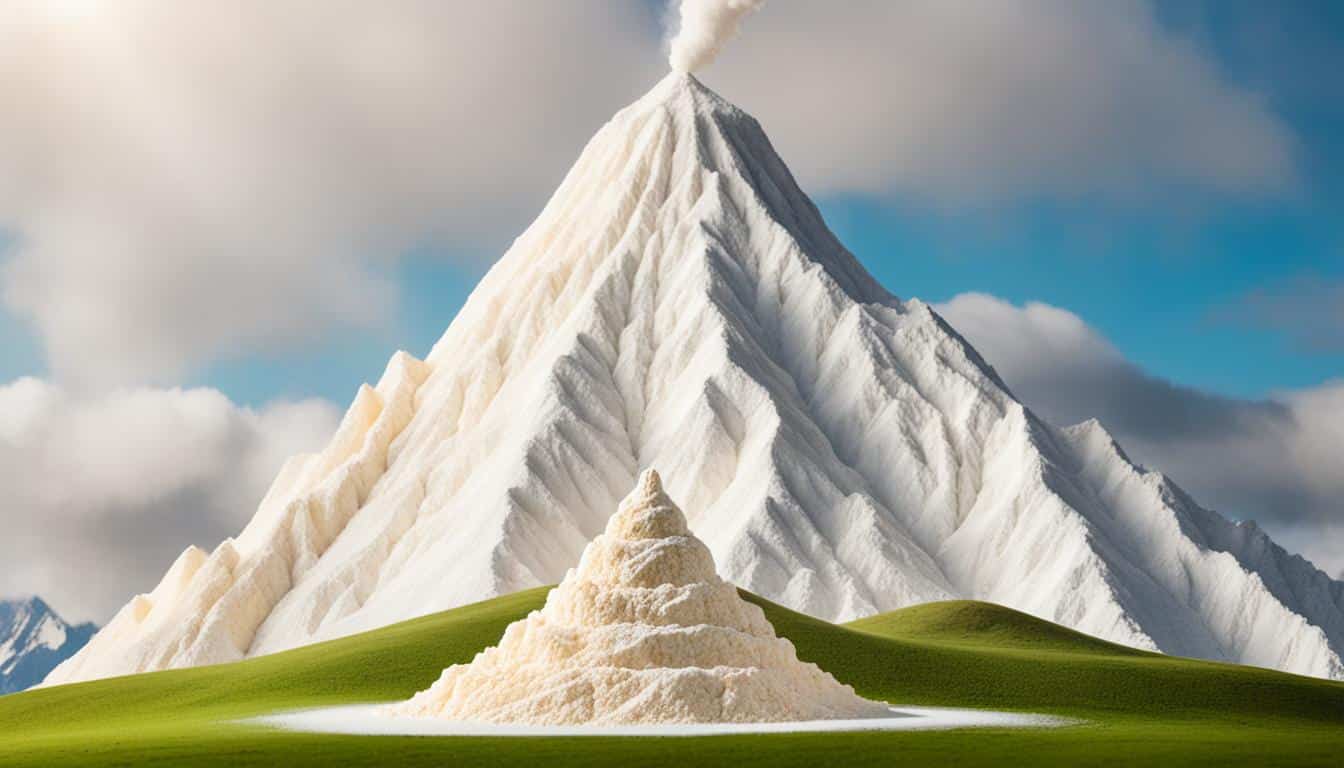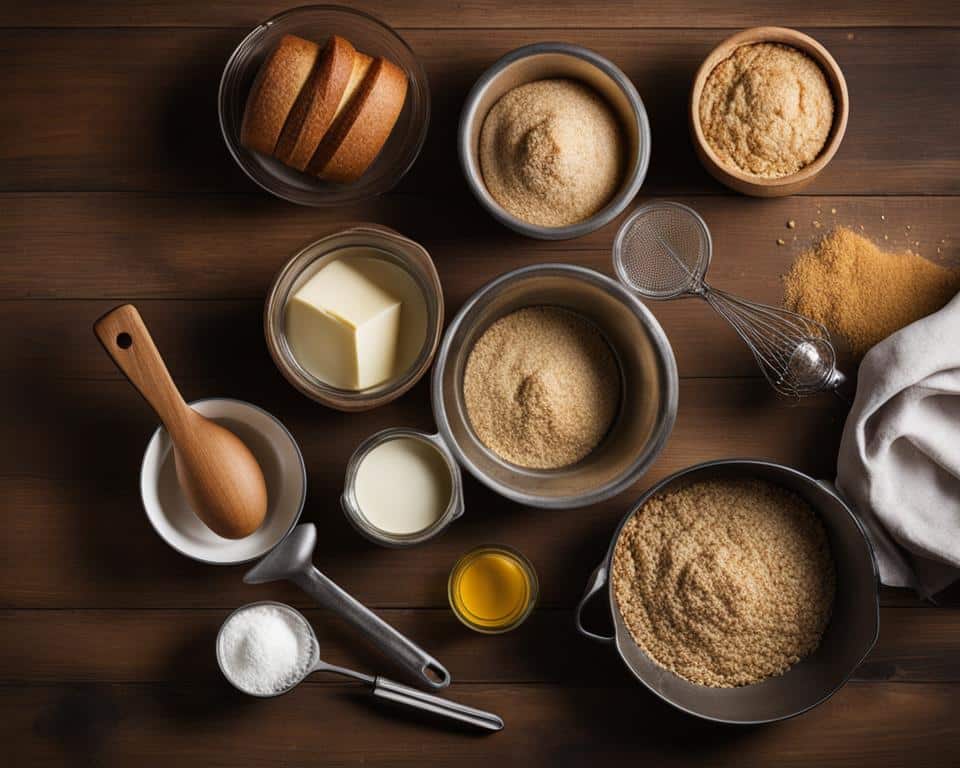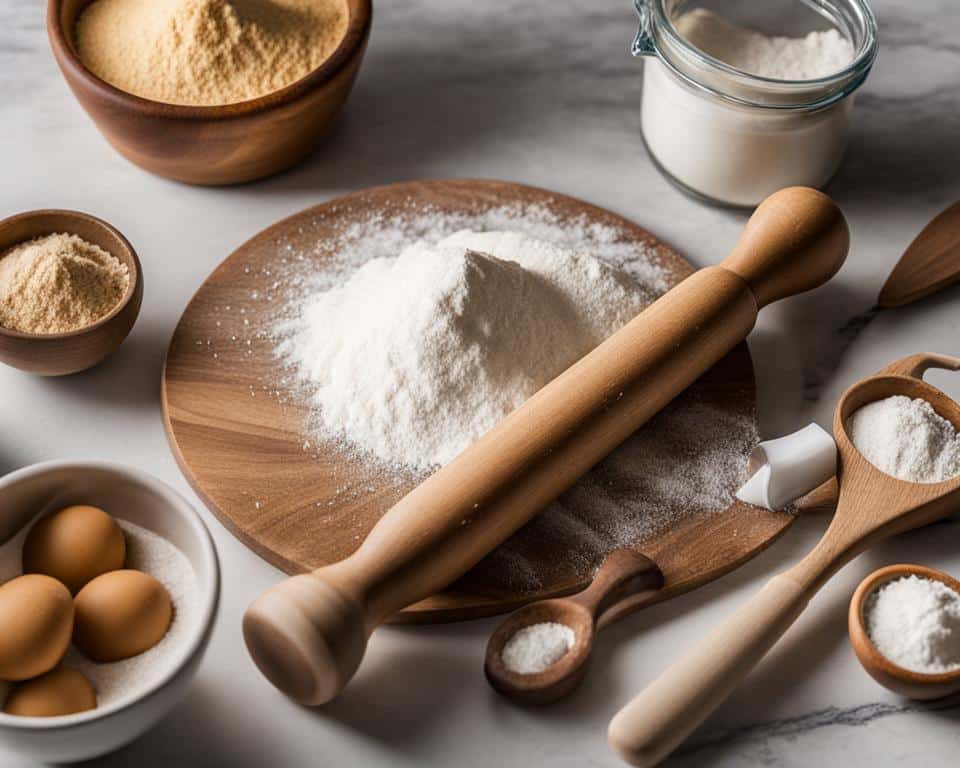The Highs of Baking: Adjusting Recipes for Altitude
Did you know that approximately 25% of the United States’ land is located at high altitudes?
If you find yourself baking in a high-altitude region, you may have experienced the challenges that come with it. The lower air pressure at high elevations can significantly impact the outcome of your baked goods. But fear not! With a little understanding of the baking science and some helpful tips, you can make the necessary adjustments to your recipes and achieve delicious results.
Let’s explore the science behind high-altitude baking, elevation adjustments, and recipe modifications that will help you conquer the unique challenges of baking at high altitudes.
Adjusting Oven Temperature and Baking Time
When baking at high altitudes, it’s crucial to make adjustments to oven temperature and baking time. The lower air pressure at higher elevations affects the leavening and evaporation processes, which can result in overexpansion and drying out of baked goods. To achieve perfect results, follow these recommended guidelines:
- Increase the oven temperature by 15 to 25°F (7 to 12°C). This higher temperature helps to set the structure of baked goods before they overexpand and dry out.
- Decrease the baking time by 5-8 minutes per 30 minutes of baking time. This adjustment accounts for the quicker baking process at high altitudes.
By making these adjustments, you’ll ensure that your baked goods turn out moist and perfectly baked, even at high altitudes.
| Baking Altitude | Oven Temperature Increase | Baking Time Decrease |
|---|---|---|
| 3,000 – 5,000 feet | +15°F (+7°C) | -5 minutes per 30 minutes |
| 5,000 – 7,000 feet | +20°F (+12°C) | -6 minutes per 30 minutes |
| Above 7,000 feet | +25°F (+12°C) | -8 minutes per 30 minutes |
Adjusting Sugar, Liquid, and Flour
When baking at high altitude, it is crucial to make adjustments to the amounts of sugar, liquid, and flour in your recipes. These adjustments help ensure the optimal texture and structure of your baked goods. Here’s a guide on how to modify these ingredients for successful high-altitude baking:
Sugar:
High altitude can cause sugar to concentrate, which can weaken the structure of your baked goods. To prevent this, it is recommended to decrease the amount of sugar used. Reduce the sugar by 1 tablespoon per cup in your recipes. This adjustment will help maintain the balance of flavors and textures in your baked treats.
Liquid:
Increased evaporation at higher altitudes can lead to dryness in baked goods. To counteract this, it is advisable to increase the amount of liquid in your recipes. Add an extra 1 to 2 tablespoons of liquid when baking at 3,000 feet above sea level. For every additional 1,000 feet, add an extra 1 1/2 teaspoons of liquid. This adjustment ensures that your baked goods remain moist and enjoyable.
Flour:
At higher altitudes, the structure of baked goods may be compromised. To strengthen the structure and prevent collapse, it is recommended to add more flour to your recipes. Add 1 more tablespoon of flour per recipe when baking at 3,500 feet above sea level. For every additional 1,500 feet, add an additional tablespoon of flour. This adjustment provides the necessary structure to your baked goods, resulting in a perfect consistency.
Remember, making these adjustments to sugar, liquid, and flour can significantly improve your high-altitude baking results. Experiment with these modifications to achieve the desired texture and taste in your baked treats.
| Ingredient | Altitude Adjustment |
|---|---|
| Sugar | Decrease by 1 tablespoon per cup |
| Liquid | Add 1-2 tablespoons at 3,000 feet, and an extra 1 1/2 teaspoons for each additional 1,000 feet |
| Flour | Add 1 tablespoon at 3,500 feet, and an additional tablespoon for each additional 1,500 feet |
By adjusting the sugar, liquid, and flour in your high-altitude baking recipes, you can achieve delicious and perfectly baked treats that will impress your family and friends.
Adjusting Leavening Agents and Recipe Variations
One crucial aspect of high-altitude baking is making adjustments to the leavening agents used in recipes. Leavening agents, such as baking powder and baking soda, play a significant role in creating light and fluffy baked goods. However, at higher altitudes, the lower air pressure affects the leavening process, making it necessary to modify the amounts of these agents to achieve optimal results.
To determine the appropriate adjustments, you can refer to a helpful chart that suggests decreasing the amounts of leavening agents based on your specific altitude. These adjustments help prevent over-rising and collapsing of baked goods due to the faster leavening process at higher altitudes.
In addition to adjusting leavening agents, considering recipe variations can further enhance your high-altitude baking success. For instance, when preparing cakes, increasing the amount of liquid by incorporating extra eggs can contribute to a moister and more tender texture. When it comes to cookies, slightly increasing the water content and reducing the amount of chemical leavens used can help maintain the ideal balance of flavor and structure.
It’s important to note that various other baked goods, including breads and pies, also require specific adjustments and considerations when baking at high altitude. Experimenting with recipe modifications and exploring expert advice tailored to each type of baked good can lead to delightful and successful outcomes in your high-altitude baking endeavors.















Post Comment